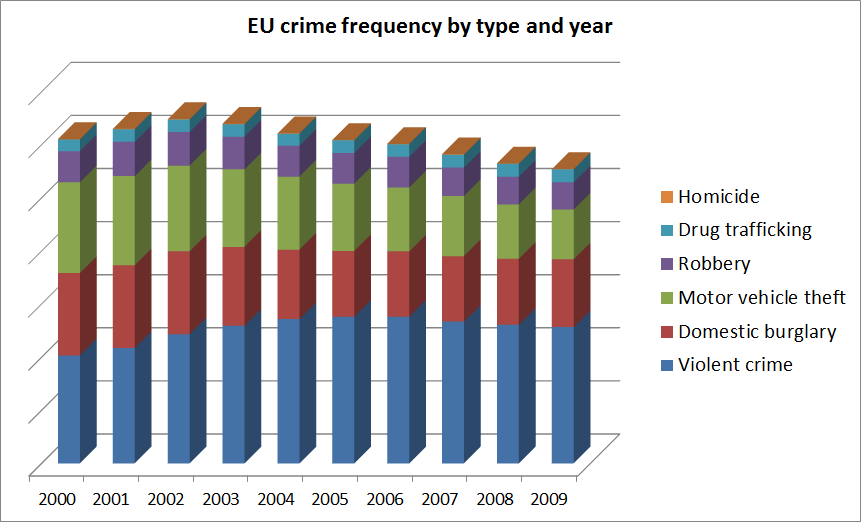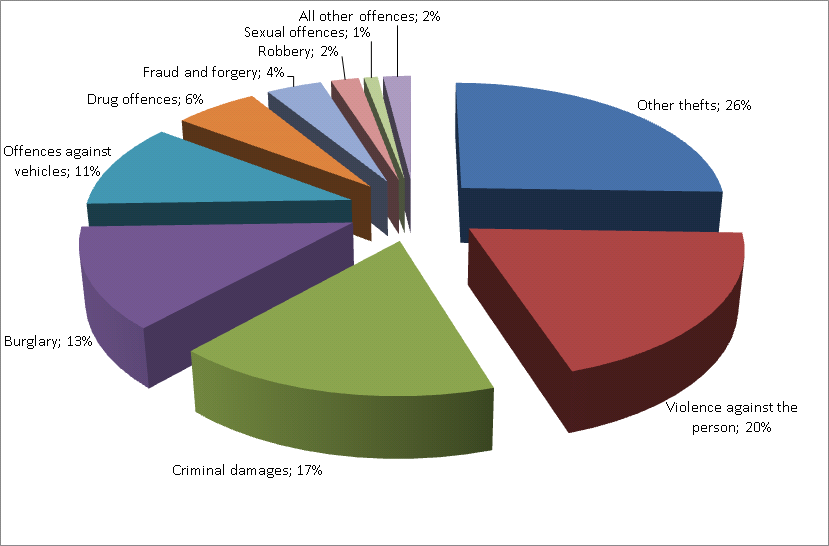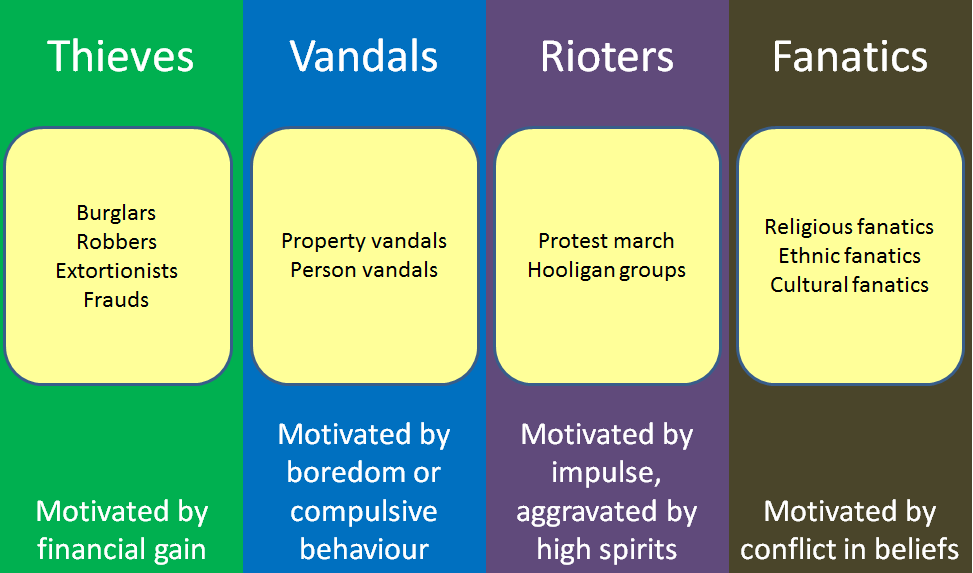Difference between revisions of "Crime"
| Line 8: | Line 8: | ||
=== Legal categorisation === |
=== Legal categorisation === |
||
The following classes of offences are used, or have been used, as legal terms of art: |
The following classes of offences are used, or have been used, as legal terms of art: |
||
* Offence against the person<ref name="ReferenceA">For example, by the [[wikipedia:Visiting Forces Act 1952|]]</ref> |
* Offence against the person<ref name="ReferenceA">For example, by the [[wikipedia:Visiting Forces Act 1952|Visiting Forces Act 1952]]</ref> |
||
* Violent offence<ref name="ReferenceB">For example, by section 31(1) of the [[wikipedia:Criminal Justice Act 1991|]], and by the [[wikipedia:Criminal Justice Act 2003|]]</ref> |
* Violent offence<ref name="ReferenceB">For example, by section 31(1) of the [[wikipedia:Criminal Justice Act 1991|Criminal Justice Act 1991]], and by the [[wikipedia:Criminal Justice Act 2003|Criminal Justice Act 2003]]</ref> |
||
* Sexual offence<ref name="ReferenceB"/> |
* Sexual offence<ref name="ReferenceB"/> |
||
* Offence against property<ref name="ReferenceA"/> |
* Offence against property<ref name="ReferenceA"/> |
||
Revision as of 10:00, 15 April 2013
Crime is the breach of rules or laws for which some governing authority (via mechanisms such as legal systems) can ultimately prescribe a conviction.[1]
Contents
Causes of crime
In brief, a criminal event happens when a predisposed, motivated and resourceful offender encounters, or engineers, a conducive crime situation. The situation in turn comprises a suitable target in a favourable environment, in the absence of people who might prevent the crime and the presence of those who might promote it. This has been called the Conjunction of Criminal Opportunity[2][3]
Crime categorisation
Legal categorisation
The following classes of offences are used, or have been used, as legal terms of art:
EU categorisation
There is no uniform categorisation of crime used all over Europe. Rather, each country uses its own system to classify and record crime, but at a very generic level, the collected statistics are reported to a central European database, called eurostat yearly[6]. The crimes in this database concern the following six categories:
- Homicide[7],
- Violent crime[8]
- Robbery[9],
- Domestic burglary[10]
- Vehicle theft[11],
- Drug trafficking[12]
US categorisation
The US statics, recorded by the Criminal Justice Information Services, a subdivision of the FBI, drill down to a much greater level of detail[13], but at the highest level of subdivision only
- Violent crime and
- Property crime
are discriminated.
UK categorisation
The UK crime statistics, recorded in the annual report 'Crime in England and Wales'[14], uses still another categorisation of crimes, the highest subdivision of which is:
- Property crime
- Drug offences
- Other miscellaneous offences
An exhausite listing of all crime types distinguished in the various countries of Europe would not be useful, as this would encompass local regulations and crimes not relevant in an urban context. This is why we developed the categorisation of Security issues, a listing of the crimes that are of prime concern to the urban planner.
Occurence of crime
An indication of the relative size of crime types recorded in the eurostat database and their development through the years is given in the figure to the right.[15]. In this figure, we can discern the large differences in rate of occurance between faily commonplace crimes, like vehicle theft or violence and more extreme crimes, like homocide.
As an illustration of the variability in the way and level of detail crimes are recorded in the various member states, the crime statistics of England and Wales of the year 2010-2011[16] are presented in the figure to the right.
Categorisation by motive
A classification that is developed[17] for use in the urban environment that the types of crime most relevant to urban design, is based on the motivation of perpetrators:
The first category of criminals (thieves) is motivated by financial gain. They can be subdivided into:
- Burglars, who gain wealth by illicitly entering buildings,
- Robbers, who gain wealth by force of threat.
- Extortionists, who gain wealth by use of coercion and
- Frauds, who gain wealth by intentional deception
The second category of criminal (vandals) is motivated by amusement (such as bored youth bothering passers-by) or by compulsive behaviour (such as pyromaniacs). They can be sub divided into:
- Property vandals, who seek damage or destruction of property, and
- Person vandals, who assaults other people physically or mentally.
The third category (rioters) is motivated by impulse, often under group pressure, often in a situation with a high level of excitement or arousal. Two subtypes of rioters are:
- Protesters and
- Hooligans.
The fourth and last category is motivated by conflict in beliefs (fanatics) and tries to impose rules or beliefs upon others by use of coercion. The level of coercion can vary a great deal, ranging from mental abuse to mass killing. Subtypes of fanatics are:
- Religious fanatics, who try to impose religious beliefs or religious rules
- Ethnic fanatics, who coerce specific ethnic groups and
- Cultural fanatics, who try to impose cultural beliefs (for example about animal welfare in the fur industry, globalism or conservationism) upon others.
Footnotes and references
- ↑ from: wikipedia
- ↑ [Secured by design - Safer Places]
- ↑ Ekblom, The conjunction of criminal opportunity, http://webarchive.nationalarchives.gov.uk/20100413151441/http://www.crimereduction.gov.uk/learningzone/ccofull.pdf
- ↑ 4.0 4.1 For example, by the Visiting Forces Act 1952
- ↑ 5.0 5.1 For example, by section 31(1) of the Criminal Justice Act 1991, and by the Criminal Justice Act 2003
- ↑ http://epp.eurostat.ec.europa.eu/portal/page/portal/crime/data/database
- ↑ Definition: This is defined as intentional killing of a person, including murder, manslaughter, euthanasia and infanticide. Causing death by dangerous driving is excluded, as are abortion and help with suicide. Attempted (uncompleted) homicide is also excluded. The counting unit for homicide is normally the victim (rather than the case).
- ↑ This includes violence against the person (such as physical assault), robbery (stealing by force or by threat of force), and sexual offences (including rape and sexual assault).
- ↑ Robbery is a sub-set of violent crime. It is defined as stealing from a person with force or threat of force, including muggings (bag-snatching) and theft with violence. Pick-pocketing, extortion and blackmailing are generally not included.
- ↑ Domestic burglary is defined as gaining access to a dwelling by the use of force to steal goods.
- ↑ Motor vehicles include all land vehicles with an engine that run on the road which are used to carry people (including cars, motor cycles, buses, lorries, construction and agricultural vehicles, etc.).
- ↑ Definition:This is defined as the illegal possession, cultivation, production, supplying, transportation, importing, exporting, financing etc. of drug operations which are not solely in connection with personal use.
- ↑ http://www.fbi.gov/about-us/cjis/ucr/crime-in-the-u.s/
- ↑ https://www.gov.uk/government/uploads/system/uploads/attachment_data/file/116435/hosb0812.pdf
- ↑ Derived from Eurostat crime statistics database "Crim_gen"
- ↑ http://www.homeoffice.gov.uk/publications/science-research-statistics/research-statistics/crime-research/hosb1011/hosb1011?view=Binary
- ↑ Developed in the Secure haven project (in Dutch) and adapted for use in the Securban tool component and this wiki.


